|
|
| Übersicht – Contents: | |
|
|
| Übersicht – Contents: | |
Flagge – Flag: |
|
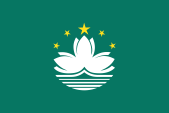 |
Flagge von Macau – flag of Macau, Seitenverhältnis – ratio = 2:3, Quelle/Source, nach/by: Wikipedia (DE)   |
historische Flaggen – historical Flags: |
|
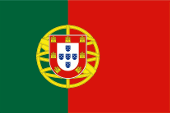 |
1911 – 20. Dec.1999, Flagge Portugals – flag of Portugal, Seitenverhältnis – ratio = 2:3, Quelle/Source: Corel Draw 4  |
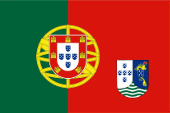 |
60-er Jahre 19. Jhd. / sixties of the 19th cent., |
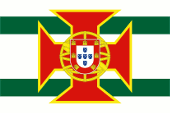 |
1933–1975, Flagge des Generalgouverneurs – flag of the Governor General, Seitenverhältnis – ratio = 2:3, Quelle/Source, nach/by: Die Welt im bunten Flaggenbild  |
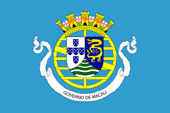 |
bis/to 20. Dec.1999, Flagge der Kolonialregierung – flag of the Colonial government, Quelle/Source: Thommy, Public domain, via Wikimedia Commons |
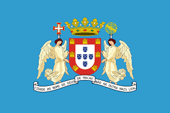 |
bis/to 20. Dec.1999, Flagge des Senats – flag of the Senate, Quelle/Source: Flag_Portugal_(1640).svg: NikNak, Public domain, via Wikimedia Commons |
| Die heutige Flagge von Macau war schon vor der Übergabe an China inoffiziell eingeführt worden, und war schon damals bei der Bevölkerung sehr beliebt. Sie zeigt auf grünem Hintergrund eine weiße Lotosblüte, darunter eine stilisierte Brücke, darüber ein Bogen aus fünf goldenen, fünfzackigen Sternen. Die Farben der Flagge werden folgendermaßen angegeben, hexadezimal: Grün = #067662, was Pantone 335 entsprechen würde, Gelb = #FFDF1E, was Pantone 108 entsprechen würde. | The today's flag of Macau was already unofficially introduced before the handing over to China and was already at that time very popular in the population. It shows a white lotus flower on a green background, with a stylised bridge below and an arch of five golden, five-pointed stars above. The colours of the flag are given as follows, hexadecimal: Green = #067662, which would correspond to Pantone 335, Yellow = #FFDF1E, which would correspond to Pantone 108. |
| In der Zeit als portugiesische Kolonie wurde ausschließlich die portugiesische Nationalflagge verwendet, da man die Kolonien als fester Bestandteil des Mutterlandes betrachtete, und nicht als Außenbesitzungen. Das bedeutete, das portugiesische Kolonien nie eigene Flaggen hatten, auch wenn es in den sechziger Jahren des 20. Jahrhunderts Bestrebungen gab Flaggen für die Kolonien einzuführen, indem man das Wappen der Kolonie in das fliegende Ende der portugiesischen Nationalflagge platzierte. Diese Pläne wurden jedoch nie realisiert. | In the
times of the Portugese colony was solely in use the Portugese national flag
because they saw the colonies as permanent component of the motherland and
not as outer possessions. This implys that Portugese
colonies never had own flags, even if there were ambitions in the sixties of
the 20th century to introduce flags for the colonies by placing of the coat
of arms of the colony in the flying end of the Portugese national flag. But
this plans became never realized. |
| Quelle/Source: Wikipedia (DE), Wikipedia (EN) | |
Landkarte – Map: |
Lage – Position: |
Landkarte des Landes – Map of the Country: |
|
|
| Zahlen und Fakten – Numbers and Facts: | |
|
|
|
|
|
|
|
|
|
|
|
|
|
|
|
|
|
|
|
| 1513 ·
der portugiesische Seefahrer Jorge Álvares erreicht die Inseln von Macau 1557 · Portugal pachtet die Halbinsel Macau von China 1849 · Portugal besetzt die Inseln Taipa und Coloane und erklärt Macau zu portugiesischem Territorium, der Pachtvertrag erlischt 1887 · China erkennt Macau als portugiesische Kolonie an 1941 · Japan besetzt Macau 1945 · die japanischen Truppen in Macau kapitulieren 1951 · Macau wird portugiesische Überseeprovinz 1974 · Portugal will Macau an China zurückgeben, China lehnt ab 1976 · neuer Status für Macau: "autonomes Chinesisches Territorium unter portugiesischer Verwaltung" 1987 · Vertrag zwischen Portugal und China über die Rückgabe Macaus am 20.12.1999 20.12.1999 · Portugal übergibt Macau an China, Macau wird Besonderes Chinesisches Verwaltungsgebiet (SAR) |
| 1513 ·
the Portugese seafarer Jorge Álvares reaches the islands of Macau 1557 · Portugal leases the Macau Peninsula from China 1849 · Portugal occupys the islands Taipa and Coloane and declares Macau to a Portugese territory, the leasing contract expires 1887 · China recognizes Macau as Portugese colony 1941 · Japan occupies Macau 1945 · the Japanese troops in Macau surrender 1951 · Macau becomes a Portugese Overseas Province 1974 · Portugal wants to give back Macau to China, China rejects 1976 · new status for Macau: "autonomous Chinese territory under Portugese administration" 1987 · treaty between Portugal and China about the return of Macau on the 20th of December in 1999 20th of December · Portugal hands over Macau to China, Macau becomes a Special Chinese Administration Region (SAR) |
| Quelle/Source: Wikipedia (D), Discovery '97 |
| Der Begriff "Macau" stammt eigentlich aus der chinesischen Sprache. Ursprünglich hieß die Bucht von Macau "A-Ma Gao" was "Bucht der Göttin A-Ma" heißt, und woraus die Portugiesen im 16. Jahrhundert "Macau" gemacht haben. Manchmal wurde auch der Begriff "Macao" verwendet. Der heutige chinesische Name "Aomen" hat damit nichts mehr zu tun. "Aomen" heißt "Tor zur Bucht". | The term
"Macau" descends actually from the Chinese language. Initially the Bay of
Macau was named "A-Ma Gao" what means "Bay of the Goddess A-Ma" out of which
the Portugese in the 16th century made "Macau". Sometimes was also in use
the term "Macao". The today's Chinese name "Aomen" has nothing to do with
this anymore. "Aomen" means "Gate to the Bay". |
| Quelle/Source: Handbuch der geographischen Namen | |